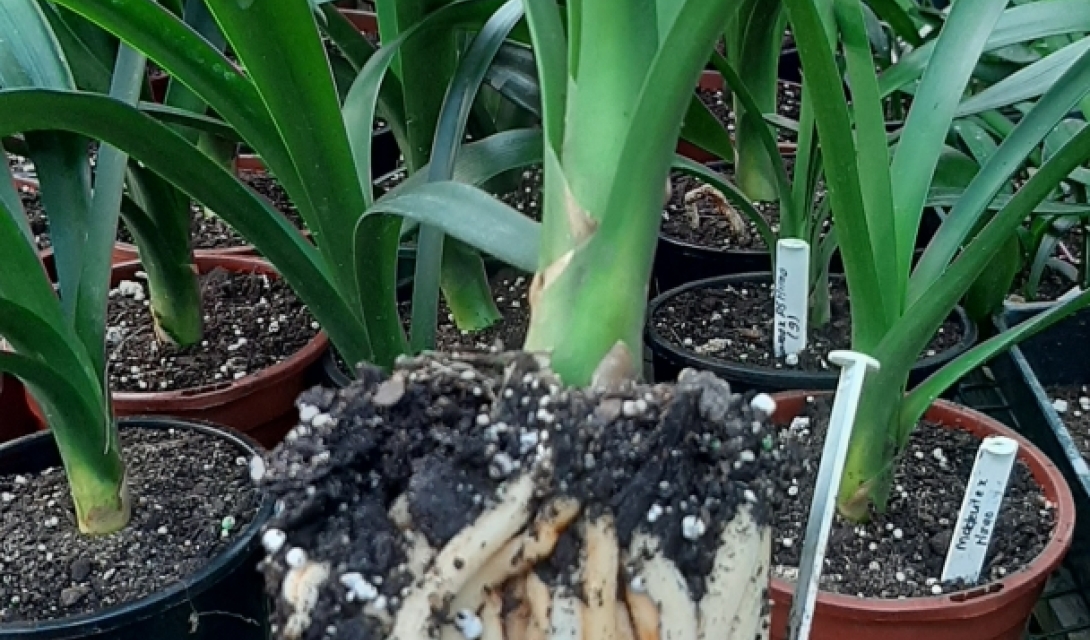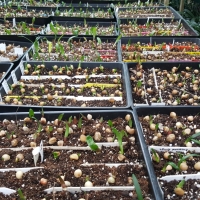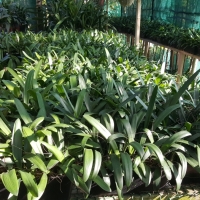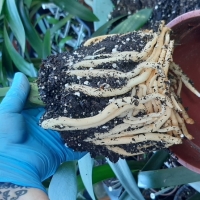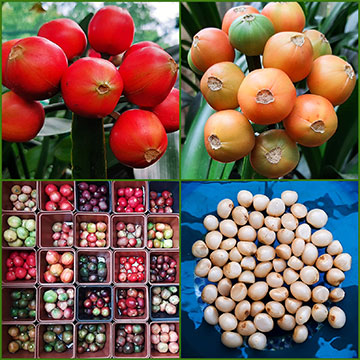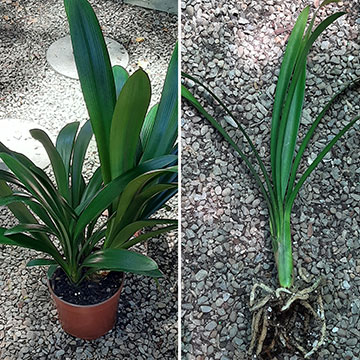Preventing Pests and Diseases in Clivias
To maintain clean, disease-free plants, we use a combination of systemic insecticide and systemic fungicide, which ensures all-round protection.
Insect Control for Clivias: Immidor
Immidor is a systemic insecticide that helps control a wide variety of pests commonly found on Clivias.
Active ingredient: Imidacloprid
Protects against both agricultural and home-garden pests
Absorbs into plant tissue for long-lasting internal protection
Disease Control for Clivias: Orius
Orius is a trusted systemic fungicide that provides both preventative and curative action against fungal infections.
Active ingredient: Tebuconazole
Shields plants from a broad range of fungal diseases
Strengthens plant resilience and prevents recurring infections
Using Immidor and Orius together forms a powerful defence system that keeps your Clivias healthy all year.
Common Pests and Diseases of Clivia – Identification
Clivias are generally robust, but like all plants, they are vulnerable to pests and diseases. Early identification and proper treatment are key to maintaining healthy, thriving plants. Below is a guide to common problems affecting Clivias.
1. Aphids
Tiny green or black insects often seen in small colonies on new growth or flower buds. Aphids suck plant sap, weakening growth and spreading viruses. Ants often farm them for their honeydew.
Treatment:
Chemical: Spray with Chlorpyrifos (brands like Garden Ripcord or Chlorforce). Cover the entire plant.
Immidor is a systemic insecticide that helps control a wide variety of pests commonly found on Clivias.
Active ingredient: Imidacloprid
Protects against both agricultural and home-garden pests
Absorbs into plant tissue for long-lasting internal protection
Organic: Introduce natural predators like Ladybirds (Lady Bugs), which feed on aphids.
2. Mealybugs
Small, woolly white to grey insects hiding in new growth, between leaf bases, and even beneath the soil. They are serious pests as they spread viruses and are difficult to eradicate once established.
Treatment:
Chemical: Use Chlorpyrifos (Garden Ripcord) as a direct contact spray, thoroughly wetting the entire plant.
Organic: Mix rubbing alcohol (70% Isopropyl Alcohol) with water and spray affected areas. Drench soil or dunk the entire plant in the solution to target hidden pests.
Best Long-term: Apply granular systemic insecticides like Plant Protector (Imidacloprid-based) around the base and water in lightly.
Immidor is a systemic insecticide that helps control a wide variety of pests commonly found on Clivias.
Active ingredient: Imidacloprid
Protects against both agricultural and home-garden pests
Absorbs into plant tissue for long-lasting internal protection
3. Lily Borer (Amaryllis Borer Moth - Brithys pancratii)
A major pest in South Africa, these black and yellow caterpillars tunnel into leaves, flower stalks, bulbs, and berries, potentially destroying plants.
Treatment:
Immediate control with Garden Ripcord spray.
Preventative: Interplant Clivias with other Amaryllid species (e.g., Crinums, Amaryllis) to deter infestation.
Systemic Drench: Apply every six months with products like Plant Protector (Imidacloprid).
Immidor is a systemic insecticide that helps control a wide variety of pests commonly found on Clivias.
Active ingredient: Imidacloprid
Protects against both agricultural and home-garden pests
Absorbs into plant tissue for long-lasting internal protection
4. Red Spider Mite
Tiny reddish-brown mites that spin webs under leaves, causing yellowing, bronzing, and weakened plants.
Treatment:
Immidor is a systemic insecticide that helps control a wide variety of pests commonly found on Clivias.
Active ingredient: Imidacloprid
Protects against both agricultural and home-garden pests
Absorbs into plant tissue for long-lasting internal protection
5. Slugs and Snails
These pests feed on soft new growth, causing ragged damage.
Treatment:
Chemical: Scatter Snailbait (brands like Deadline M or Ferramol, a pet-safe option) around plants.
Organic: Place shallow dishes filled with beer as traps. Alternatively, coat a cabbage leaf with lard and collect snails at night.
6. Fungal & Bacterial Diseases
Clivias are susceptible to seed rot, root rot, damping-off, rust, leaf spots, and bacterial rot.
Treatment:
Orius is a trusted systemic fungicide that provides both preventative and curative action against fungal infections.
Active ingredient: Tebuconazole
Shields plants from a broad range of fungal diseases
Strengthens plant resilience and prevents recurring infections
Tip: Maintain good airflow, avoid overwatering, and use sterilised tools.
7. Viruses
Viruses cause mottled or spotted leaf patterns and stunted growth. Transmitted by insects, contaminated tools, or infected propagation material.
Treatment:
No cure exists. Destroy infected plants and sterilise tools between uses.
Control aphids, mealybugs, and scale to reduce virus spread.
8. Nematodes (Root-Knot Nematodes)
Microscopic soil worms attacking roots, causing stunted growth and yellowing.
Treatment:
Difficult to eliminate entirely.
Some success with systemic soil drenches (e.g., Plant Protector).
Heat treatment used commercially but risky for home growers.
Consider crop rotation or soil replacement if severe.
9. Scale Insects
Often introduced by ants, these insects form hard shells on stems and leaves, excreting sticky honeydew.
Treatment:
Immidor is a systemic insecticide that helps control a wide variety of pests commonly found on Clivias.
Active ingredient: Imidacloprid
Protects against both agricultural and home-garden pests
Absorbs into plant tissue for long-lasting internal protection
Control ants to reduce scale infestations.
10. Snout Beetle (Weevil Damage)
Nocturnal pests feeding on leaves and bracts.
Treatment:
Immidor is a systemic insecticide that helps control a wide variety of pests commonly found on Clivias.
Active ingredient: Imidacloprid
Protects against both agricultural and home-garden pests
Absorbs into plant tissue for long-lasting internal protection
Night trapping with light traps or manual collection can help reduce numbers.
General Tips for Healthy Clivias:
✅ Always sterilise tools between plants.
✅ Quarantine new plants before introducing them to your collection.
✅ Regular inspections help catch pests early.
✅ Follow label instructions for all chemicals and consult your local nursery for legal, registered products.
Disclaimer: Always use pesticides responsibly. Product names mentioned are commonly available in South Africa; availability may vary. Consult with your local garden centre or agricultural advisor regarding legal product use in your area.
